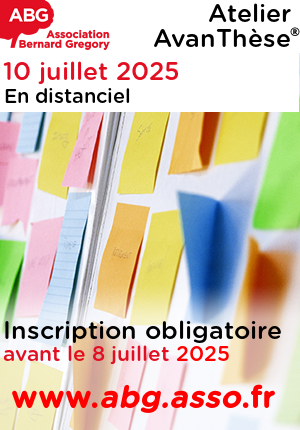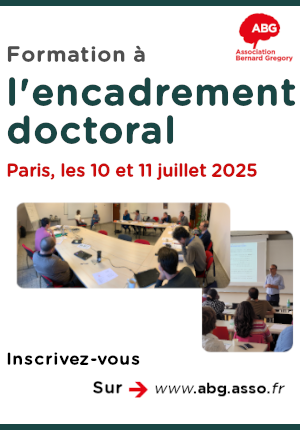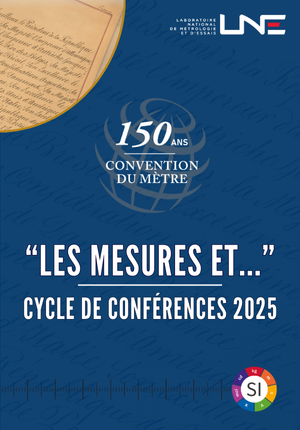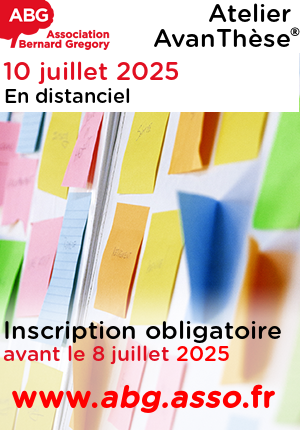Imagerie matricielle et problème inverse : de l'échographie ultrasonore à l'acoustique marine // Matrix imaging and inverse problem: from ultrasonic medical to marine acoustic imaging
|
ABG-129625
ADUM-63159 |
Sujet de Thèse | |
| 18/03/2025 | Contrat doctoral |
Mines Paris-PSL
Fontainebleau - France
Imagerie matricielle et problème inverse : de l'échographie ultrasonore à l'acoustique marine // Matrix imaging and inverse problem: from ultrasonic medical to marine acoustic imaging
., .
., .
., .
Description du sujet
L'imagerie « ultrasonore » concerne l'analyse des ondes acoustiques ou élastiques pour des fréquences allant de 1 à 40 MHz. Les applications principales sont celles de l'imagerie médicale et du contrôle non destructif, typiquement pour des profondeurs d'investigation centimétriques et une résolution millimétrique. D'un autre côté, l'imagerie « acoustique » a pour objectif de cartographie les fonds marins et les premiers kilomètres du sous-sol, pour une résolution attendue décamétrique (fréquences typiques entre 10 et plusieurs centaines de 100 Hz). L'objectif de la thèse est de confronter les avancées récentes dans les deux domaines et voir s'il est possible de les transposer.
Sans être exhaustif, voici quelques aspects qui mériteraient d'être approfondis :
• L'imagerie ultrasonore s'intéresse à des milieux diffusants générant un « speckle » ultrasonore induit par une distribution aléatoire de diffuseurs sousrésolus. Récemment le concept d'imagerie matricielle a été développé pour exploiter ce speckle et corriger en post-traitement les problèmes d'aberrations et de réverbérations qui polluent généralement l'imagerie ultrasonore (Bureau, 2003). L'imagerie acoustique marine fait souvent face à des milieux multi-couches plus déterministes (réflexion spéculaire). Pourtant, des zones faillées et avec de forts contrastes impliquent des phénomènes de diffractions multiples. Un premier objectif est donc de voir si l'approche matricielle peut être appliquée avec succès à ces problèmes en acoustique marine ;
• Par ailleurs, sous l'hypothèse de diffraction simple, de récents progrès ont été réalisés du côté de l'imagerie acoustique avec la dérivation d'un opérateur d'imagerie quantitatif (pseudo-inverse, Chauris and Cocher, 2017 ; Chauris and Farshad, 2023) qui apporte une bien meilleure résolution que les opérateurs standards d'imagerie (adjoint). Il sera intéressant de voir si l'opérateur inverse peut s'appliquer dans le régime du « speckle » ultrasonore ;
• L'imagerie acoustique marine considère à la fois des perturbations de vitesse et de densité du milieu et le couplage possible entre ces deux paramètres, alors que l'imagerie ultrasonore n'est que qualitative et se contente d'imager la réflectivité du milieu. La possibilité d'imager de manière indépendantes les fluctuations de vitesse du son et de densité en imagerie ultrasonore constituerait un véritable « tour de force »;
• Dans les deux domaines, il s'agit aussi de focaliser au mieux les zones à imager en jouant sur le macro-modèle de vitesse de propagation des ondes. Là encore, les techniques sont différentes (approches matricielles par exemple pour l'imagerie ultrasonore, Lambert, 2020; et analyse de vitesse par migration pour l'imagerie acoustique marine) ;
Au-delà d'une comparaison théorique des approches, l'objectif est aussi d'appliquer ces avancées récentes sur des jeux de données typiques de chaque domaine. Pour l'imagerie ultrasonore, il s'agira de données de phantoms ultrasonores mimant les propriétés acoustiques des tissus, puis de données in-vivo du foie, du sein et du cerveau (imagerie transcrânienne). Pour l'imagerie marine acoustique, le cas pourra être celui de la fosse de Nankai au large du Japon, avec des structures complexes liées aux hydrates de gaz dans les premières centaines de mètres du sous-sol.
------------------------------------------------------------------------------------------------------------------------------------------------------------------------
------------------------------------------------------------------------------------------------------------------------------------------------------------------------
Ultrasonic imaging involves the analysis of acoustic or elastic waves at frequencies ranging from 1 to 40 MHz. The main applications are in medical imaging and nondestructive testing, typically for centimeter depths of investigation and millimeter resolution. Acoustic imaging, on the other hand, aims to map the sea bed and the first few kilometers of the subsurface, with an expected resolution of ten meters (typical frequencies between 10 and several hundred 100 Hz). The aim of this thesis is to compare recent advances in the two fields and see whether they can be transposed.
Without being exhaustive, here are challenges that should be explored in greater depth:
• Ultrasound imaging is concerned with scattering media generating an ultrasound “speckle” induced by a random distribution of sub-resolved scatters. Recently, the concept of “matrix imaging” has been developed to exploit this speckle and correct, in post-processing, the problems of aberrations and reverberations that generally pollute ultrasonic imaging (Bureau, 2003). Marine acoustic imagery is often faced with more deterministic multi-layer environments (specular reflection). However, faulted zones with high contrasts imply multiple diffraction phenomena. The first objective is therefore to see whether the matrix approach can be successfully applied to these problems in marine acoustics;
• Furthermore, under the assumption of simple diffraction, recent progress has been made in acoustic imaging with the derivation of a quantitative imaging operator (approximate inverse, Chauris and Cocher, 2017; Chauris and Farshad, 2023) which provides much better resolution than standard (adjoint) imaging operators. It will be interesting to see whether the inverse operator can be applied in the ultrasonic speckle regime;
• Acoustic marine imaging considers both disturbances in the velocity and density of the medium and the possible coupling between these two parameters, whereas ultrasound imagery is only qualitative and is designed to image the reflectivity of the medium. The ability to image sound velocity and density fluctuations independently in ultrasound imaging would be a real breakthrough;
• In both fields, focusing the areas to be imaged offers a possibility to improve the quality of the macro-model controlling the wave propagation. Here again, the techniques are different (matrix approaches, for example, for ultrasound imagery, Lambert, 2020; and speed analysis by migration for marine acoustic imaging);
In addition to a theoretical comparison of approaches, the aim is also to apply these recent advances to data sets typical of each field. For ultrasound imaging, this will involve data from ultrasound phantoms mimicking the acoustic properties of tissues, followed by in-vivo data from the liver, breast and brain (transcranial imaging). For acoustic marine imaging, the case could be the Nankai Trough off the coast of Japan, with complex structures in the first few hundred meters below the subsurface.
------------------------------------------------------------------------------------------------------------------------------------------------------------------------
------------------------------------------------------------------------------------------------------------------------------------------------------------------------
Début de la thèse : 01/10/2025
Sans être exhaustif, voici quelques aspects qui mériteraient d'être approfondis :
• L'imagerie ultrasonore s'intéresse à des milieux diffusants générant un « speckle » ultrasonore induit par une distribution aléatoire de diffuseurs sousrésolus. Récemment le concept d'imagerie matricielle a été développé pour exploiter ce speckle et corriger en post-traitement les problèmes d'aberrations et de réverbérations qui polluent généralement l'imagerie ultrasonore (Bureau, 2003). L'imagerie acoustique marine fait souvent face à des milieux multi-couches plus déterministes (réflexion spéculaire). Pourtant, des zones faillées et avec de forts contrastes impliquent des phénomènes de diffractions multiples. Un premier objectif est donc de voir si l'approche matricielle peut être appliquée avec succès à ces problèmes en acoustique marine ;
• Par ailleurs, sous l'hypothèse de diffraction simple, de récents progrès ont été réalisés du côté de l'imagerie acoustique avec la dérivation d'un opérateur d'imagerie quantitatif (pseudo-inverse, Chauris and Cocher, 2017 ; Chauris and Farshad, 2023) qui apporte une bien meilleure résolution que les opérateurs standards d'imagerie (adjoint). Il sera intéressant de voir si l'opérateur inverse peut s'appliquer dans le régime du « speckle » ultrasonore ;
• L'imagerie acoustique marine considère à la fois des perturbations de vitesse et de densité du milieu et le couplage possible entre ces deux paramètres, alors que l'imagerie ultrasonore n'est que qualitative et se contente d'imager la réflectivité du milieu. La possibilité d'imager de manière indépendantes les fluctuations de vitesse du son et de densité en imagerie ultrasonore constituerait un véritable « tour de force »;
• Dans les deux domaines, il s'agit aussi de focaliser au mieux les zones à imager en jouant sur le macro-modèle de vitesse de propagation des ondes. Là encore, les techniques sont différentes (approches matricielles par exemple pour l'imagerie ultrasonore, Lambert, 2020; et analyse de vitesse par migration pour l'imagerie acoustique marine) ;
Au-delà d'une comparaison théorique des approches, l'objectif est aussi d'appliquer ces avancées récentes sur des jeux de données typiques de chaque domaine. Pour l'imagerie ultrasonore, il s'agira de données de phantoms ultrasonores mimant les propriétés acoustiques des tissus, puis de données in-vivo du foie, du sein et du cerveau (imagerie transcrânienne). Pour l'imagerie marine acoustique, le cas pourra être celui de la fosse de Nankai au large du Japon, avec des structures complexes liées aux hydrates de gaz dans les premières centaines de mètres du sous-sol.
------------------------------------------------------------------------------------------------------------------------------------------------------------------------
------------------------------------------------------------------------------------------------------------------------------------------------------------------------
Ultrasonic imaging involves the analysis of acoustic or elastic waves at frequencies ranging from 1 to 40 MHz. The main applications are in medical imaging and nondestructive testing, typically for centimeter depths of investigation and millimeter resolution. Acoustic imaging, on the other hand, aims to map the sea bed and the first few kilometers of the subsurface, with an expected resolution of ten meters (typical frequencies between 10 and several hundred 100 Hz). The aim of this thesis is to compare recent advances in the two fields and see whether they can be transposed.
Without being exhaustive, here are challenges that should be explored in greater depth:
• Ultrasound imaging is concerned with scattering media generating an ultrasound “speckle” induced by a random distribution of sub-resolved scatters. Recently, the concept of “matrix imaging” has been developed to exploit this speckle and correct, in post-processing, the problems of aberrations and reverberations that generally pollute ultrasonic imaging (Bureau, 2003). Marine acoustic imagery is often faced with more deterministic multi-layer environments (specular reflection). However, faulted zones with high contrasts imply multiple diffraction phenomena. The first objective is therefore to see whether the matrix approach can be successfully applied to these problems in marine acoustics;
• Furthermore, under the assumption of simple diffraction, recent progress has been made in acoustic imaging with the derivation of a quantitative imaging operator (approximate inverse, Chauris and Cocher, 2017; Chauris and Farshad, 2023) which provides much better resolution than standard (adjoint) imaging operators. It will be interesting to see whether the inverse operator can be applied in the ultrasonic speckle regime;
• Acoustic marine imaging considers both disturbances in the velocity and density of the medium and the possible coupling between these two parameters, whereas ultrasound imagery is only qualitative and is designed to image the reflectivity of the medium. The ability to image sound velocity and density fluctuations independently in ultrasound imaging would be a real breakthrough;
• In both fields, focusing the areas to be imaged offers a possibility to improve the quality of the macro-model controlling the wave propagation. Here again, the techniques are different (matrix approaches, for example, for ultrasound imagery, Lambert, 2020; and speed analysis by migration for marine acoustic imaging);
In addition to a theoretical comparison of approaches, the aim is also to apply these recent advances to data sets typical of each field. For ultrasound imaging, this will involve data from ultrasound phantoms mimicking the acoustic properties of tissues, followed by in-vivo data from the liver, breast and brain (transcranial imaging). For acoustic marine imaging, the case could be the Nankai Trough off the coast of Japan, with complex structures in the first few hundred meters below the subsurface.
------------------------------------------------------------------------------------------------------------------------------------------------------------------------
------------------------------------------------------------------------------------------------------------------------------------------------------------------------
Début de la thèse : 01/10/2025
Nature du financement
Contrat doctoral
Précisions sur le financement
Concours pour un contrat doctoral
Présentation établissement et labo d'accueil
Mines Paris-PSL
Etablissement délivrant le doctorat
Mines Paris-PSL
Ecole doctorale
398 Géosciences, Ressources Naturelles et Environnement
Profil du candidat
Le/la candidat(e) devra avoir une formation solide en mathématiques et physique, avec un goût pour les applications médicales ou pour les applications géophysiques. Il est également important d'avoir eu une expérience en programmation informatique. Le/la candidat(e) doit maîtriser l'anglais, tant à l'écrit qu'à l'oral.
Comment postuler :
Merci d'envoyer (au format pdf) à herve.chauris@minesparis.psl.eu:
• CV
• Lettre de motivation
• Copie des diplômes et relevés de notes
• Lettres de recommandation ou bien le nom d'une ou deux personnes à contacter
• Si possible un rapport de stage de master 1 ou master 2 ou bien de stage ingénieur
The candidate should have a solid background in mathematics and physics, with a taste for medical or geophysical applications. Experience in computer programming is also important. The candidate must be fluent in written and spoken English How to apply: Please send (in pdf format) to herve.chauris@minesparis.psl.eu : - Resume - Cover letter - Copies of diplomas and transcripts - Letters of recommendation or the name of one or two people to contact - If possible, a report on a Master 1 or Master 2 internship or an engineering internship.
The candidate should have a solid background in mathematics and physics, with a taste for medical or geophysical applications. Experience in computer programming is also important. The candidate must be fluent in written and spoken English How to apply: Please send (in pdf format) to herve.chauris@minesparis.psl.eu : - Resume - Cover letter - Copies of diplomas and transcripts - Letters of recommendation or the name of one or two people to contact - If possible, a report on a Master 1 or Master 2 internship or an engineering internship.
30/06/2025
Postuler
Fermer
Vous avez déjà un compte ?
Nouvel utilisateur ?
Besoin d'informations sur l'ABG ?
Vous souhaitez recevoir nos infolettres ?
Découvrez nos adhérents
 Groupe AFNOR - Association française de normalisation
Groupe AFNOR - Association française de normalisation 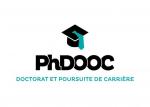 PhDOOC
PhDOOC  CASDEN
CASDEN  Nokia Bell Labs France
Nokia Bell Labs France 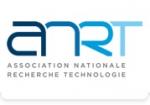 ANRT
ANRT  MabDesign
MabDesign  TotalEnergies
TotalEnergies  Tecknowmetrix
Tecknowmetrix 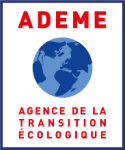 ADEME
ADEME  Généthon
Généthon  Institut Sup'biotech de Paris
Institut Sup'biotech de Paris  ONERA - The French Aerospace Lab
ONERA - The French Aerospace Lab  CESI
CESI  SUEZ
SUEZ  Aérocentre, Pôle d'excellence régional
Aérocentre, Pôle d'excellence régional  ASNR - Autorité de sûreté nucléaire et de radioprotection - Siège
ASNR - Autorité de sûreté nucléaire et de radioprotection - Siège  MabDesign
MabDesign  Ifremer
Ifremer  Laboratoire National de Métrologie et d'Essais - LNE
Laboratoire National de Métrologie et d'Essais - LNE



